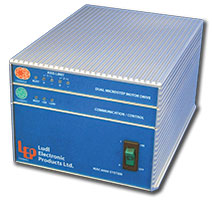Ludl Electronic Products Microscope Automation
BioVision Technologies offers the following range of Ludl Electronic Products microscope automation products:
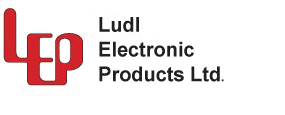
BioPrecision3 LM X‐Y Stage
This Linear Motor stage employs technology that eliminates the traditional motor and leadscrew drive found in conventional stages. The result is a next generation stage that provides high performance in a more compact and light weight package. The new design allows better access for loading and unloading specimens. It also reduces the height for better microscope compatibility.
This stage provides precise manual and programmable control with high resolution for intracellular positioning as well as high speed for large area scanning. The benefit of the low mass and lightweight construction goes beyond the stage precision; it improves the performance of the entire optical system. The lower moving mass reduces stress on the microscope stand, significantly improving accuracy and reliability. This results in a nearly silent maintenance free operation.
The stage system is a direct replacement for Nikon, Olympus, Zeiss and Leica Microsystems microscope stages. A full range of specimen holders and accessories is available. The MAC6000 Linear DC Servo Drive module makes the BioPrecision3 LM Stages fully compatible with all existing software applications.
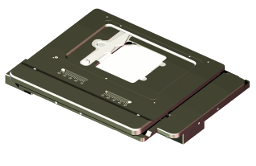
BioPrecision2 X‐Y Stage
BioPrecision2 stages are designed for the highest performance possible. Design features include precision recirculating ball leadscrews, high‐resolution linear or rotary encoders, precision‐ground crossed‐roller guide bearings and adjustable limits. Each stage is carefully assembled by experienced technicians with careful measurements taken at each step to ensure that the stage performs to expectations.
The quality extends itself to the appearance of the stage also. All aluminum components are anodized to military specifications. In addition, the stages are assembled using stainless steel hardware. This means that over years of exposure and laboratory use the stage will continue to maintain its performance and appearance.
Adaptability is also a hallmark of the BioPrecision2 stages. The adjustable end limits allow the working envelope to be tailored for each application and to ensure clearance for different microscope configurations. The exchangeable insert adds the ability to use different specimen holders for different applications. Whenever your requirements change, the BioPrecision2 stage will fill the need.

BioPoint2 X‐Y Stage
The BioPoint2 is the second generation value priced automation solution from Ludl Electronic Products. Specifically designed for productivity enhancement, the stage system is designed to provide high performance for routine applications with lower cost.
Unique design features are specifically optimized for the BioPoint2 stage to improve repeatability, resolution and ease of use. The BioPoint2 stage features a Teflon‐coated leadscrew driven by a dampened stepper motor for reduced hysteresis and higher repeatability. The hard‐anodized finish resists wear from daily use and is resistant to discoloration from chemicals or harsh environments.
The BioPoint2 systems are based on the popular MAC 6000 controller system. The MAC 6000 controller provides enhanced modularity and flexibility for the addition of accessories such as programmable focus drives and filter wheels.
The ease of use, integration and expansion make the BioPoint 2 system a high value automation system and an intelligent choice for microscope automation.
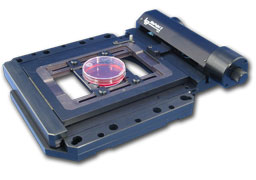
NanoPrecision Focus Control
The NanoPrecision Piezo Z‐stages feature the speed, resolution and accuracy of Piezo nano positioning. Each NanoPrecision device is specifically designed to suit a particular application.
Performance by Design
The LEP NanoPrecision design features a proprietary balanced displacement sensor to provide accurate high resolution position feedback. The system is uniquely designed to measure actual Z‐stage displacement. This design provides the best performance in terms of stability and reliability—with variable loads and at variable frequencies.
NanoPrecision Z‐stages for Inverted Microscopes
Now more than ever LEP makes the advantages of precision automation easy and convenient. The BioPrecision2 Piezo focus insert features all of the expected performance of a Piezo focus but adds improved compatibility with standard stage accessories including multi‐well plate holders, slide holders, perfusion chambers and incubators.
There are two versions of the LEP Piezo Z‐stage. The 96A602 Piezo Z‐stage has a larger aperture and accommodates industry‐standard specimen holders. The larger insert allows the use of many popular accessories for live cell research. The larger format also makes specimen exchange easier with less chance of upsetting sensitive samples. The 96A603 Piezo Z‐stage is more compact and is compatible with standard LEP inverted stages that feature a standard (“Frame K”) opening.

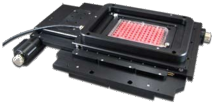
NanoPrecision Focus Stage for Upright Microscopes
The 96A064 Piezo Z‐stage is designed for compatibility with upright microscopes and upright microscope applications. The unique design features an open access area toward the rear to accommodate the swing of the microscope objective turret. Holders are available for standard 1″×3″ and 2″×3″ glass slides.
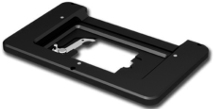
Standard Focus Drive Motor
The standard automated focus is a motor coupled to the fine focus of the microscope. The Ludl Electronic Products precision stepper motor drive can provide very high resolution: up to 2.5 nanometers.
An optional linear encoder can be integrated with the focus motor. The encoder is affixed to the microscope body so that it provides real-time measurement of the stage height in relation to the optics.
The result is a stable, highly accurate performance that can dynamically compensate for focus drift and drive errors.
Manual control of motorized focus is available via an optional digipot that provides positive feedback similar to a conventional microscope but with higher accuracy and less uncertainty.
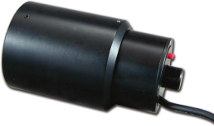
Smart Focus Encoder
The cutting‐edge technology of the Smart Focus Encoder is the difference between simply detecting position and actually measuring position.
Most conventional encoders are designed to detect a change in position. As the position changes it signals the controlling system with a series of pulses. The number and frequency of the pulses allow the controller to determine the position. However, since all of the pulses are identical its impossible for the controller to determine the position without an initial reference.
The Smart Focus Encoder achieves a new level of focus performance utilizing a proprietary high‐speed digital interface to report the current focus position in absolute terms. This completely eliminates the need to initialize or reference the encoder—it will always report the correct position. Cycle power, re-boot software, change specimens, switch objectives; the encoder will always report the correct position within fractions of a micron!
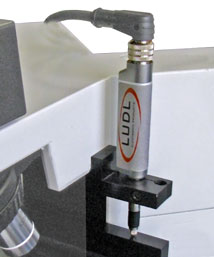
Filter Wheel and Shutter
The Ludl Electronic Products filter wheel provides fast, automated and efficient optical filter changing for microscopes.
Typically mounted to the microscope between the lamp housing and the microscope stand, the filter wheel becomes a part of the microscope, enhancing performance without compromising optical characteristics or ease of use. Mounting arrangements are available for most commonly available microscopes including all of the current microscopes available from Nikon Instruments, Olympus, Leica Microsystems and Carl Zeiss.
The filter wheel is driven by a DC servo motor specifically selected for smooth, quiet, damped wheel motion. The filter wheel position is digitally encoded, which makes it immune to slippage and skipping errors.
The electronic shutter, available as a stand-alone or integrated with the filter wheel, provides reliable control of the light and exposure times. Designed for high reliability without sacrificing speed, it is unaffected by the high heat from intense illumination sources. The single moving part in the shutter is rated to 50 million cycles.
Because the Ludl Electronic Products filter wheel and shutter are driven by the MAC 6000 controller system, they are supported by almost any available imaging software application.
A separate shutter-only controller is also available. This controller is capable of driving up to 4 shutters. Digital inputs and outputs are provided for synchronizing the shutter with cameras and other acquisition devices. The controller’s USB and RS-232 interfaces provide access for imaging software.
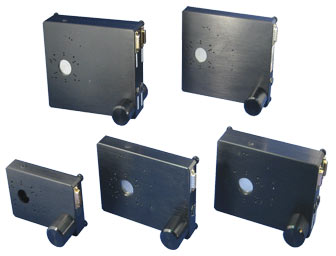
Microscope Slide Handler System
The Ludl Electronic Products Slide Handler system is designed to be simple, flexible, affordable and reliable. It is a complete slide handling solution with full features without complexity. The simplicity of its slide transfer mechanism provides efficient, reliable slide loading. A single arm functions to pull the slide from the cassette to the stage and then return it with an opposite pushing motion. Once the slide is transferred to the stage it is located with a unique fixturing device for repeatable positioning and slide reloading in all axes. As the precision X‐Y stage scans the slide, the transfer mechanism is completely clear of any interference with normal microscope function.
The Slide Handler system is built upon technology from the Ludl Electronic Products MAC 6000 automation controller and the BioPrecision2 X‐Y stage. The automation controller system supplies reliable performance that is expandable and configurable. The X‐Y stage provides the highest performance. This flexible system architecture adapts to a wide range of microscopes.
For applications where high precision is required all encoder options are available. Linear encoders provide the most accuracy and resolution with precision performance. Standard rotary encoders ensure reliability for unattended operation.
Powerful software commands ensure flexibility. Cassettes are configurable as input‐only, as output‐only or as both, suiting your specific requirements. Access to slides can be in any order. The MAC 6000 controller provides for easy interfaces to peripherals such as barcode scanners and other sensors. With this flexibility the system is ideally suited for high‐volume screening, analysis, classification and review applications.
Of course, simply loading a slide to the microscope stage solves only part of the automation equation. Depending upon the specific application, other aspects of microscope control may need to be automated as well. The Slide Handler system can accommodate many microscope automation requirements for almost any microscope including programmable focus drives, filter changers and objective turret changers.
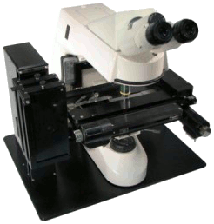
MAC 6000 Controller
Automation Control System for Mac or PC
The MAC 6000 system is the fifth‐generation automation controller system from Ludl Electronic Products. Specifically designed for microscope control, the modular system is a very practical system. In its simplest configuration, the MAC6000 can be set up for a single motion axis such as a microscope focus. Expanding the system with the additional modules, the MAC 6000 can be used to automate every aspect of a microscope. The MAC 6000 system has dedicated support for X‐Y stages, filter wheels, shutters, and focus controls as well as support for general‐purpose applications for stepper motors, DC servo motors, piezo transducers along with analog and digital I/O and synchronization functions.
Built solidly upon nearly 30 years of experience designing and manufacturing precision systems tailored for demanding scientific applications, the all‐new MAC 6000 is the state of the art. Featuring dedicated microprocessors for optimal performance, precision control is assured with fast, stable servo response, dynamic joystick control and software commands.
Expanded communication ports include dual RS‐232 ports up to 115K baud, Ethernet and USB. A multi-protocol communication language ensures compatibility with previous LEP MAC 5000 and MAC 2000/2002 controller systems. New protocols expand the power to interface better with contemporary host processing architectures.
The MAC 6000 goes far beyond simple motion control: it is an automation manager. The system features a built-in programmable scripting language that allows simple development of scripts for sequencing combinations of actions. Utilizing the scripting language, the user can create new commands, add functionality and program sequences. Specialized functions such as safety lockouts, tracking maintenance intervals and sensor integration are just a few of the limitless possibilities that can be accomplished using scripts.
State‐of‐the‐art processors and programmable logic devices coupled with enhanced software interfaces enable sophisticated hardware signaling capabilities. Electronic and software triggering features eliminate communication overhead making the MAC 6000 ideally suited for high throughput applications.
A separate shutter-only controller is also available. This controller is capable of driving up to 4 shutters. Digital inputs and outputs are provided for synchronizing the shutter with cameras and other acquisition devices. The controller’s USB and RS-232 interfaces provide access for imaging software.
